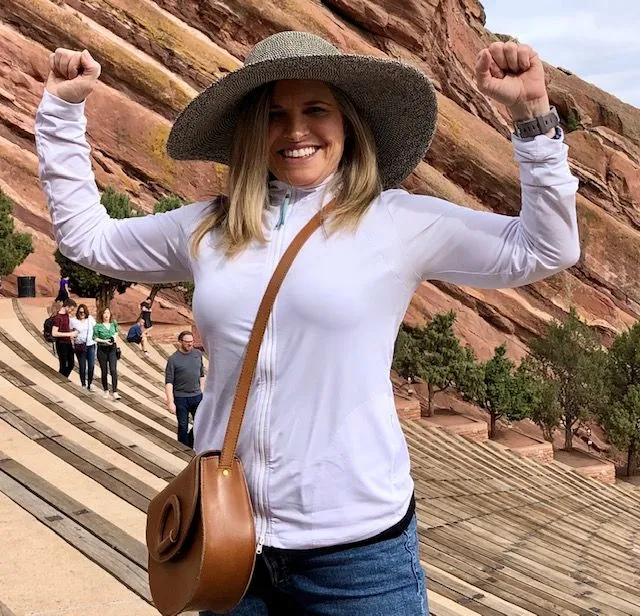
Heidi N., CO
Working out 7 days a week--cardio, strength, core training, and clean eating--has been, and continues to be, a huge part of my life and who I am. I hike trails at significant inclines in Colorado on the weekends. I am a health educator and fitness trainer. I teach fitness classes to healthcare professionals and provide one-on-one training to athletes and people striving for good health. I live a life of prevention and I have never smoked. My husband of 33 years is a primary care physician who focuses on prevention. We never had lung cancer on our radar as something I was at risk for. I was taught from a very young age that lung cancer was a “smoker’s disease”. I was never made aware of any other risk factors.
My life changed forever on October 24, 2018. This is the day I was diagnosed with stage 3A lung cancer. I had no respiratory symptoms and my lung tumor was an incidental finding. I have had a history of ovarian cysts my entire adult life. At the age of 55, I felt a familiar twinge on my lower left side and thought, given my age, I should get this checked by my gynecologist. After an examination and ultrasound, my doctor told me I had a 6-centimeter cyst on my left ovary.
To be thorough, he ordered the CA-125 tumor marker test to assess the likelihood of ovarian cancer. My CA-125 level came back as 36—one point over a normal reading. This did not sit well with my doctor, so he consulted with his Gyn-Onc colleagues. They suggested that it would appropriate to order a CT scan of my chest, abdomen, and pelvis to rule out anything worrisome, and we could continue to monitor the cyst or remove the ovary if necessary. The result of my CT scan was shocking.
The ovary did not appear abnormal in appearance, but a 2.5 cm mass was found in the upper lobe of my left lung along with two mediastinal “plump” lymph nodes in two different stations. What followed was a PET scan that lit up the mass and the lymph nodes, then an EBUS biopsy of the lymph nodes. Diagnosis: stage 3A adenocarcinoma of the lung. Basic genomic testing did not demonstrate any driver mutations. Because I had multi-station disease, I was considered inoperable and was offered one treatment option; chemoradiation followed by a year of every other week immunotherapy infusions of Durvalumab, if I could tolerate them. Durvalumab was FDA approved in September 2018, one month prior to my diagnosis. Good timing!
How could I have advanced stage lung cancer? I knew to take care of myself by taking preventative measures against heart disease, cervical cancer, breast cancer, and colon cancer, but nothing about lung cancer. I have learned a lot in the past year. Lung cancer is the most lethal cancer in our country and the rest of in the world, and it is the least funded of all the cancers. There are no early assessments/detection programs for people who are not smokers. Would I have been better off if I smoked? I would have qualified for an annual low dose CT scan that could have caught my cancer at an earlier stage when my prognosis could have been significantly better.
Luckily, I am doing very well. I continue to live my life as I have, with lots of physical activity, clean eating, and traveling frequently to visit my 3 adult children and visiting new and exciting places in order to live my best life. I tolerated chemo-radiation very well, and I am on track to complete the year of immunotherapy (Durvalumab) in January. My latest scan showed I have no evidence of active disease, and I am very grateful for the current advancements in treatments for advanced stage lung cancer, but we must do better.
I am determined to show my face, tell my story, and spread awareness that anyone with lungs can get lung cancer. I owe my life to my gynecologist who took action, rather than a wait and watch strategy when I had such a border line CA-125 result. I was “lucky” to be caught at stage 3, which is quite sad.
First Published: April 6, 2022
Give Monthly, Get a FREE Tote!
Protecting lung health requires an ongoing commitment from all of us. Show your support now by becoming a monthly donor.

